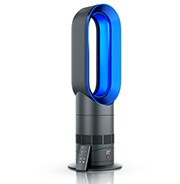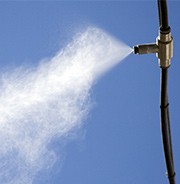

With summer and periods with high heat levels upon us, keeping your home nice and cool can seem like a challenge and a half. Which means that having the comfort of a fresh interior during summer making the most of the comfort of a cool indoors in summer very much becomes a necessity for large parts of the population (the elderly, pregnant women, young children or students in the middle of exams).
As it is, having an air conditioning system fitted comes with a price tag: anywhere between €400 for a mobile air conditioning unit and €1,500 for a permanent air conditioning system (bear in mind this comes with an expected 15 to 25% increase in power consumption and a proportionate rise in your electricity bill).
The good news is there are more affordable and more eco-friendly alternatives for air conditioners. Close your curtains, draw your sun blind and follow the guide!
Whether you go for a table model, a pedestal-mounted fan or a fan that is suspended from the ceiling, the (good old) fan is an efficient cooler and a simple alternative to an air conditioning unit. The moving air on the skin causes sweat to evaporate, which cools the body down (it doesn't just give you the impression of freshness).
Regardless of how it is set up, whether you prefer to have it swing around at whichever speed you like, a traditional fan delivers genuine added comfort. Available at all price points, there is a fan for every budget.
Are you familiar with the damp towel technique? Hanging a damp cloth (or placing a bottle of frozen water) in front of a fan significantly improves its level of performance.
The air projected onto the moist fabric (or the block of ice) causes the cold water to evaporate, which will lower the temperature in the room more quickly. It is worth pointing out that there are fans with a mister attachment fitted with a water tank which combine the two functions.

Creating a “Venturi effect” (just like an aircraft’s turbine engines), these non-moving bladeless fans not only come in sleek designs, they are also very powerful and efficient.
Bladeless fans are very safe and do not pose any risk to children. Like their equivalents, conventional fans, they also come in swinging and speed-adjustable versions.
The only downside: the price. Starting from €300 (and going well beyond), you may wish to look at a self-contained air conditioning unit.

As another alternative to air conditioners, the adiabatic cooler comes with numerous benefits:
However, there are also some drawbacks:

These outdoor misting fans are installed outdoors in the garden or on a patio, in the shade of a parasol or a sun blind. They give off a very fine mist which cools the surrounding area using the same principle as evaporation. Once properly adjusted, they will deliver an agreeable coolness without any humidity.
Given very high temperatures, misting fans can also be used indoors, provided they are set up in large rooms, and only for a limited length of time. In this case, it will need to be connected to a cold water tap.
Subscribe to our newsletter and stay informed about energyfacts.